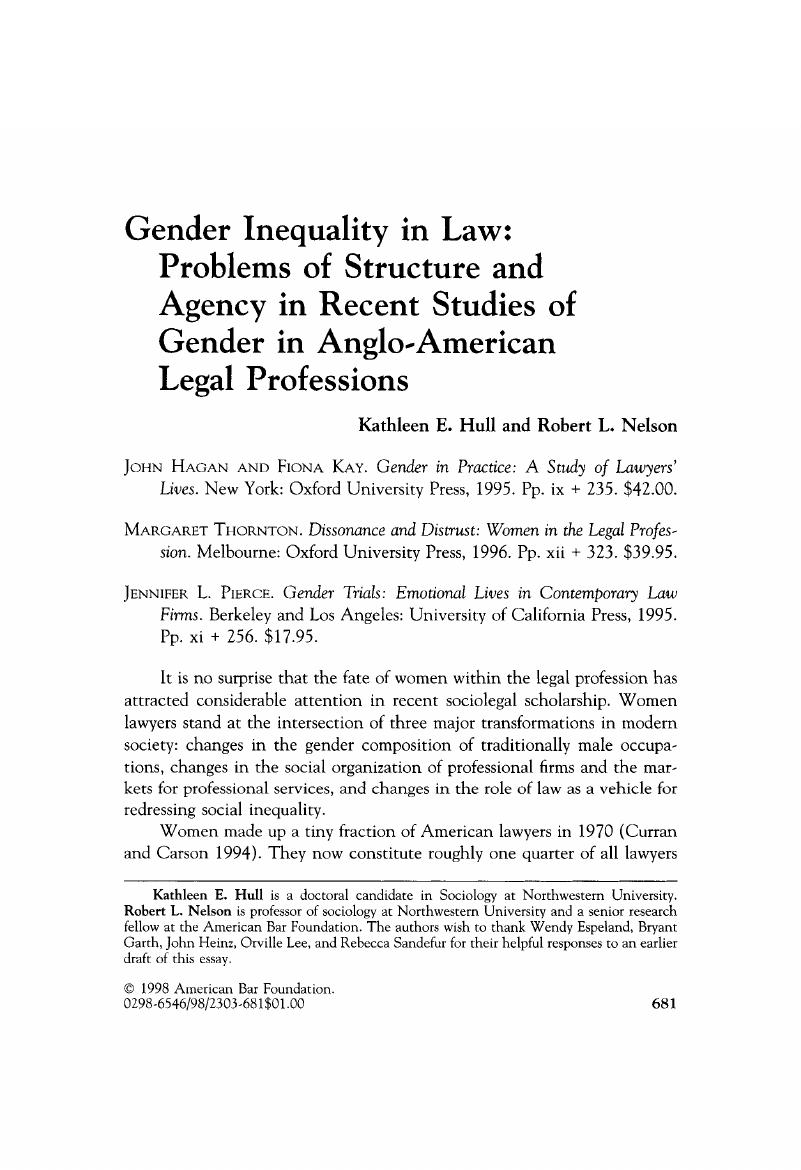Crossref Citations
This article has been cited by the following publications. This list is generated based on data provided by Crossref.
Kritzer, Herbert M.
1999.
The Professions Are Dead, Long Live the Professions: Legal Practice in a Postprofessional World.
Law & Society Review,
Vol. 33,
Issue. 3,
p.
713.
Villmoare, Adelaide H.
1999.
Feminist Jurisprudence and Political Vision.
Law & Social Inquiry,
Vol. 24,
Issue. 02,
p.
443.
Collier, Richard
2002.
The changing university and the (legal) academic career – rethinking the relationship between women, men and the ‘private life’ of the law school.
Legal Studies,
Vol. 22,
Issue. 1,
p.
1.
BOGOCH, BRYNA
and
HALPERIN‐KADDARI, RUTH
2006.
Divorce Israeli Style: Professional Perceptions of Gender and Power in Mediated and Lawyer‐Negotiated Divorces.
Law & Policy,
Vol. 28,
Issue. 2,
p.
137.
Batlan, Felice
2010.
Special Issue Law Firms, Legal Culture, and Legal Practice.
p.
169.
Melville, Angela L.
and
Stephen, Frank H.
2011.
The more things change, the more they stay the same: explaining stratification within the Faculty of Advocates, Scotland.
International Journal of the Legal Profession,
Vol. 18,
Issue. 3,
p.
211.
Blankenship-Knox, Ann E.
2017.
White, queer and female: using intersectionality as a tool for teaching social justice in the Deep South.
Whiteness and Education,
Vol. 2,
Issue. 1,
p.
60.





